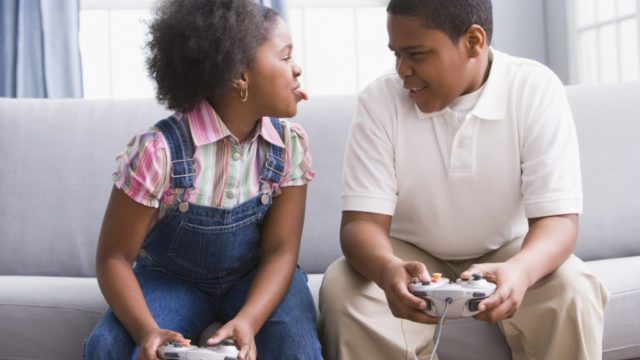Siblings are a common theme in pop culture, appearing in countless movies, TV shows, and literature.
From heartwarming depictions of close-knit families to tense and dysfunctional relationships, the portrayal of siblings in pop culture reveals a lot about our cultural values and beliefs.

Little boy and girl (siblings) reading a book in front of the family living room fireplace on Christmas morning.
Siblings are a common theme in pop culture, appearing in countless movies, TV shows, and literature. From heartwarming depictions of close-knit families to tense and dysfunctional relationships, the portrayal of siblings in pop culture reveals a lot about our cultural values and beliefs.
One of the most common depictions of siblings in pop culture is the close bond between brothers and sisters. These relationships are often portrayed as supportive and loving, with siblings standing by each other through thick and thin.
Examples of this can be seen in movies such as “The Parent Trap” and “Little Women,” where the bond between the sisters is a central theme. In TV shows like “Full House” and “Gilmore Girls,” the sibling relationships are a key element of the plot, with the characters relying on each other for emotional support and guidance.
Another common portrayal of siblings in pop culture is the rivalry between brothers and sisters. These relationships are often depicted as competitive and fraught with tension, with siblings constantly vying for attention and approval.
Movies like “Step Brothers” and “The Royal Tenenbaums” showcase the more dysfunctional side of sibling relationships, where the characters’ animosity towards each other is a major plot point. In TV shows like “The Simpsons” and “Malcolm in the Middle,” sibling rivalry is used for comedic effect, with the characters engaging in petty arguments and pranks.
The portrayal of siblings in pop culture also reveals a lot about our cultural values when it comes to family dynamics. Close-knit sibling relationships are often seen as ideal, reflecting the importance of family ties and the value of emotional support. On the other hand, sibling rivalry is often used to highlight the negative aspects of competition and jealousy, showing how these traits can damage relationships and create tension within families.
Furthermore, the portrayal of siblings in pop culture also reflects broader societal trends and expectations. For example, in the past, sibling relationships were often depicted as hierarchical, with older siblings having more authority and control over their younger siblings. However, in more recent depictions, sibling relationships are often more egalitarian, with siblings treating each other as equals and working together as a team.
Overall, the portrayal of siblings in pop culture is a reflection of our cultural values and beliefs when it comes to family dynamics. Whether it’s a close-knit bond or a dysfunctional relationship, the depiction of siblings in movies, TV shows, and literature offers insight into how we view the importance of family, the role of competition and jealousy in relationships, and the changing expectations around sibling relationships over time.


